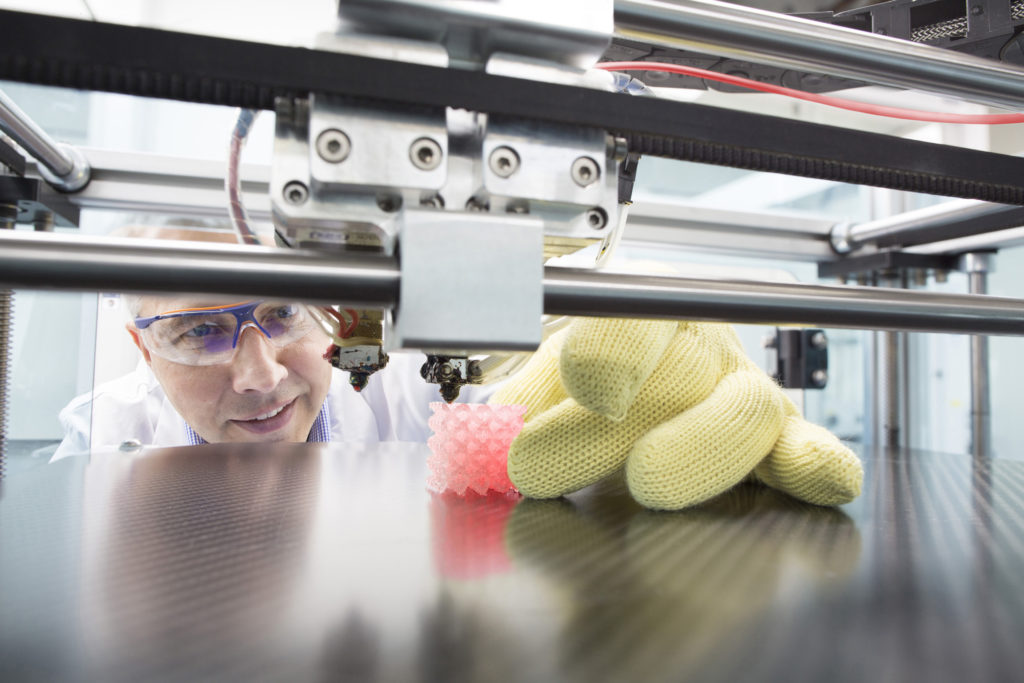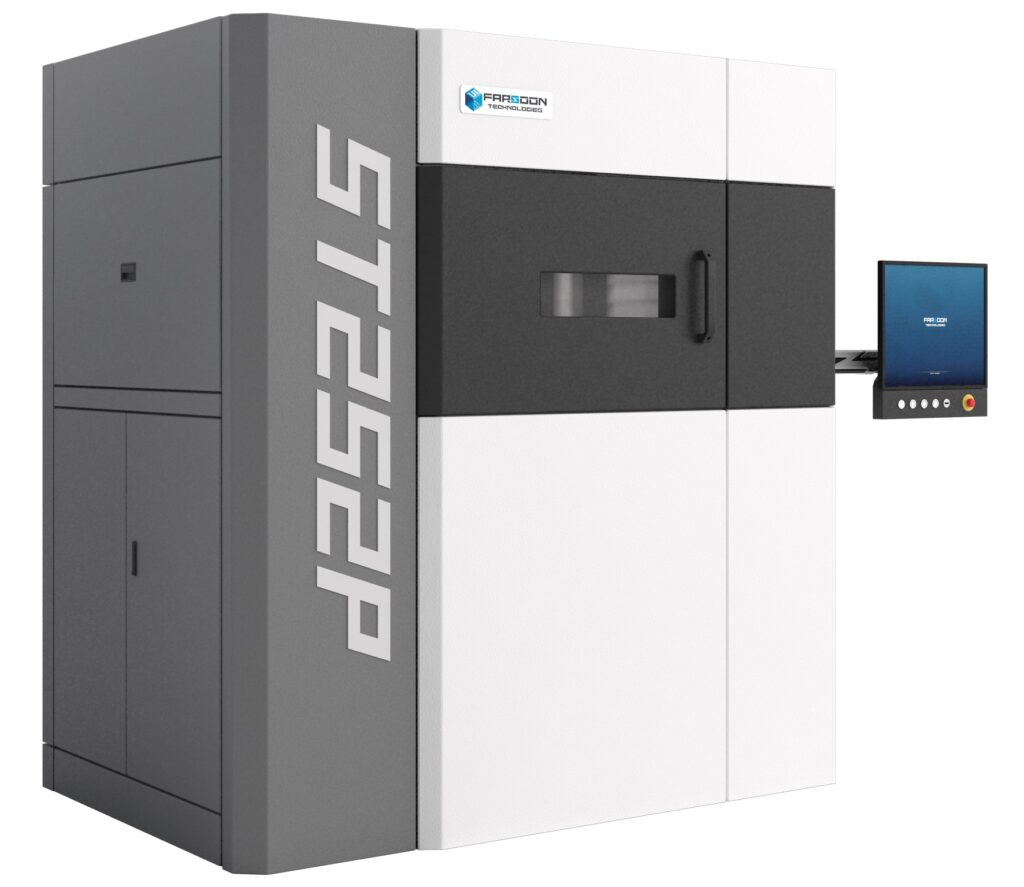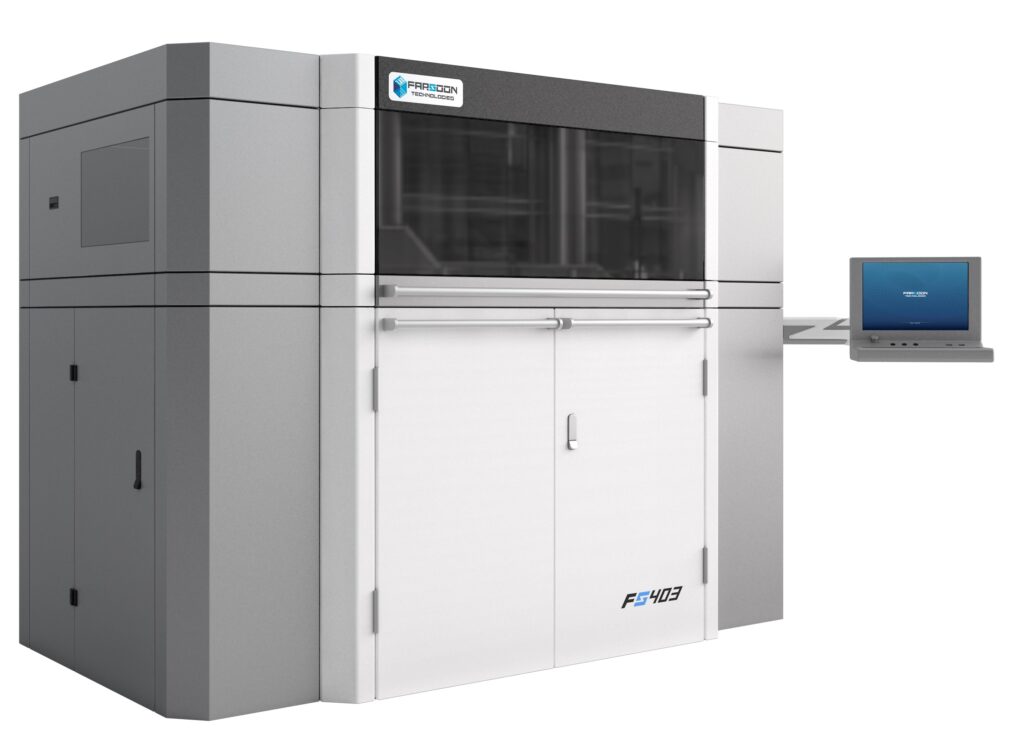Leveraging their key strategic partnership, materials manufacturer Covestro and Chinese powder bed fusion company Farsoon want to create the best possible customer experience for end-use parts. In this collaboration, the duo will develop new engineering-grade powders for polymer parts to encourage 3D printed series production.
With Covestro contributing its expertise in polymer-based 3D printing materials and Farsoon deploying its know-how of powder-based laser sintering machines, the new polymer powder materials could help a wide range of applications, including automotive, electrical, and consumer goods. Covestro has already successfully launched TPU (thermoplastic polyurethane) and PBT (polybutylene terephthalate) polymer powders that were tested using Farsoon’s 252P high-temperature series platform, which made its debut at TCT Asia 2020 in July 2020.

Covestro expert Roland Wagner observes the manufacture of a small component in the new 3D printing laboratory. Image courtesy of Covestro.
The German polymer manufacturer has been using its local AM facilities as well as operating its Dutch center (part of Covestro’s recently acquired DSM’s Resins & Functional Materials unit) to test the processing and printing of materials using Farsoon’s laser sintering systems. Additionally, several downstream customers have already validated such parts for end-use applications.
For example, with logistics and forwarding service provider Seifert Logistics Group (SLG) and its Additive Manufacturing Business unit in Ulm, Germany, Covestro and Farsoon jointly developed TPU parts for footwear using a Farsoon SS403P at high productivity levels. Similarly, they also teamed up with an undisclosed partner in the automotive industry to create end-use parts for interior car applications using a PBT powder originally developed by DSM called Arnite® T AM1210, commercially available for selective laser sintering (SLS).
It is based on this customer feedback and success that the two companies are strengthening their collaboration.
“By collaborating closely with printer manufacturers, we can test materials in the development process and provide customers verified material and printer solutions,” commented Geoff Gardner, Innovation Director Additive Manufacturing at Covestro. “Farsoon SL printers and especially their Flight™ Technology can run at standard and high temperatures so we can print PBT, PP and TPU all on the same printer. And with their higher accuracy and productivity, and lower cost per part, they are well suited for industrial production.”
Both firms are committed to an open-systems philosophy, so customers are free to choose materials for their 3D printing systems that suit their end-use applications. Since Farsoon launched China’s first high-end SLS machine in 2010, it has been focused on creating all genuinely open systems, which give operators the chance to optimize process parameters for the highest productivity at required part qualities for the material of choice. This complete freedom of operation means users have access to all parameter settings in the machine as well as any material source.
Moreover, the high-temperature and super-temperature configurations in Farsoon platforms allow process chamber temperatures of up to 220°C or 280°C, respectively. In addition, the machines are equipped with high-speed scanners and powerful lasers. Deploying its systems from Changsha, the capital of central China’s Hunan province, Farsoon is committed to making the fabrication of 3D printed parts cheaper. For example, with its trade-marked Fiber-laser Flight Technology, the high productivity of parts production makes series applications increasingly accessible.
Eager to “proactively support new applications with new polymer powders,” Farsoon Europe’s managing director Dirk Simon highlighted that Farsoon SLS machines are very compatible with Covestro’s polymer powders, offering a very interesting property profile to set an important foundation for its customers’ market success.
3D printing enthusiasts can witness the strengthened integration of these market-leading companies at Formnext 2021, which takes place November 16 through 19 in Frankfurt, Germany. Both companies will showcase their polymer powder materials and printers, Covestro at booth C11 and Farsoon at booth G 19, both located in Hall 12.1.
Subscribe to Our Email Newsletter
Stay up-to-date on all the latest news from the 3D printing industry and receive information and offers from third party vendors.
You May Also Like
3D Printing Financials: Protolabs’ Q1 3D Printing Revenue is Flat, Company Advances in Technology Push
Protolabs (NYSE: PRLB) has kicked off 2024 with a mild boost in revenue, revealing how the Minnesota-based company manages to adapt and thrive even in uncertain market conditions. While the...
NASA Backs Project for 3D Printing Space Sensors
NASA granted $300,000 to Florida State University (FSU) and Florida Agricultural and Mechanical University (FAMU) to pioneer a project using 3D printing to develop cutting-edge sensors capable of withstanding the...
Further Understanding of 3D Printing Design at ADDITIV Design World
ADDITIV is back once again! This time, the virtual platform for additive manufacturing will be holding the first-ever edition of ADDITIV Design World on May 23rd from 9:00 AM –...
Daring AM: Rocket Lab Shoots for the Stars, Astrobotic Wants to 3D Print on the Moon
Once again, space exploration teams up with the 3D printing industry, launching projects that could change how we explore space. Pioneering space manufacturer Rocket Lab (Nasdaq: RKLB) secured a $14.49...



































